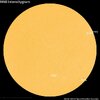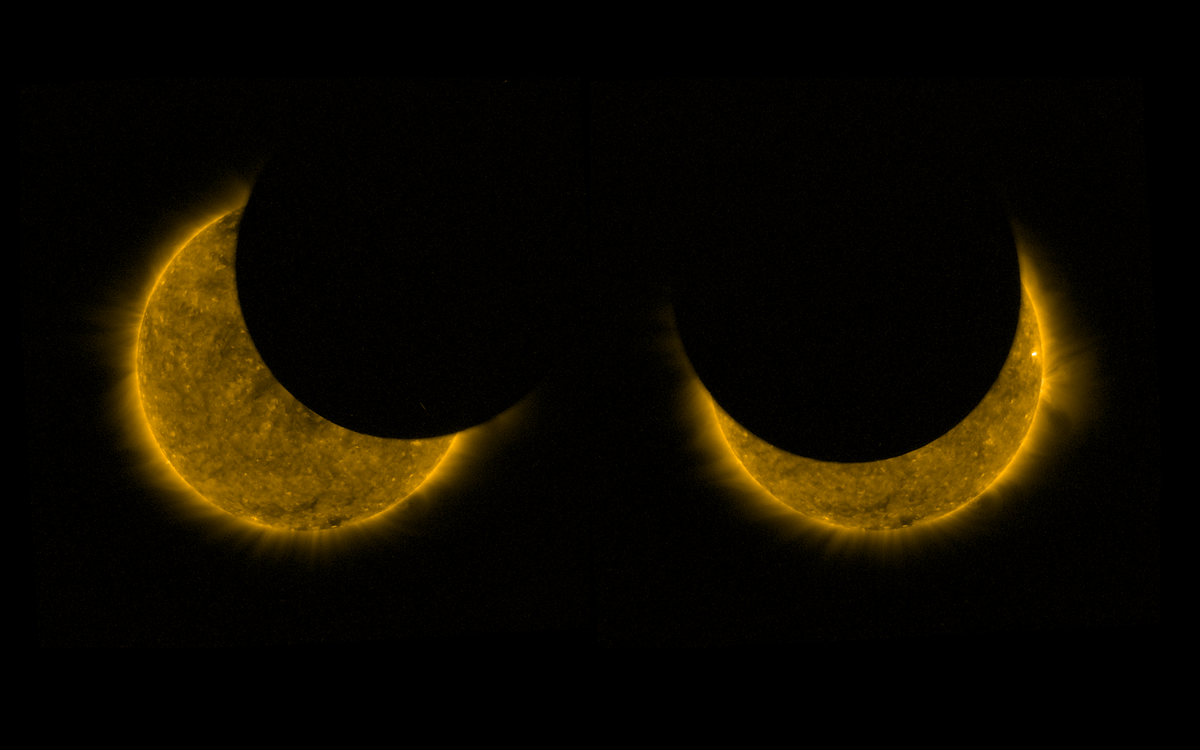SOLAR CYCLE 25 ACTIVITY REPORT OCTOBER 23
Solar activity continues at very low levels and in fact in the last 24 hours the activity came from the far side of the sun in what was the AR3122 region that left the solar disk around October 20. This region generated four C-class and two B-class flares. The largest event of the period was a C6.5 flare at 05:42 UTC on October 22
On the other hand, two sun grazing comets have been seen.
There are currently 4 numbered active regions on the disk:
AR3126 ,
AR3127,
A3128 and new region
AR3129
⁰
These two sunspots have simple magnetic fields that pose no threat for strong solar flares.
AR3129 located on the southwest (S26W86) is a 30MH area that groups 2 sunspots with beta (bipolar) magnetic complexity. According to NOAA the probability of producing C-class flares is 15% while for M and X it is 1%.
The total number of sunspots has increased to 55 (9 of these are grouped into 4 active regions) NOAA forecast for the next 24h is 35% chance for C flares, 5% chance for M flares and 1% chance for X flares.
▪︎ Auroral Activity
The geomagnetic field has been at quiet to
storm levels for the past 24 hours. Active geomagnetic conditions (Kp=4) were reached at 11:00 UTC on October 22 Minor G1 geomagnetic storm (Kp=5) threshold reached at 11:33 UTC. The geomagnetic storm subsided around 22:00 UTC (approximately 11 hours of geomagnetic storm) The solar wind speed record reached a peak of 440 km/sec at 04:10 UTC on October 23 The maximum planetary index Kp in the past 24h was Kp5
CHANCE OF STORMS TODAY: NOAA forecasters say there is a chance of
G2-class geomagnetic storms today,
Oct. 23rd, as Earth moves into a stream of high-speed solar wind. The gaseous material is flowing from
a southern hole in the sun's atmosphere. Earth's magnetosphere is already energized by yesterday's CIR, so a gust of solar wind could easily stimulate more storming. SpaceWeather.com
CO-ROTATING INTERACTION REGION: A co-rotating interaction region (CIR) hit Earth's magnetic field on Oct. 22nd, sparking a
G1-class geomagnetic storm and bright auroras around the Arctic Circle. "The colors were absolutely amazing!" says Marianne Bergli, who photographed the display from Kilpisjarvi, Finland:
Aurora oval
● Current Conditions at 06:30 UTC on October 23
▪︎Geospace quiet
▪︎Geomagnetic conditions now Kp=3
▪︎Solar wind speed record: 440 km/sec
▪︎density: 7.3 protons/cm3
▪︎Neutron Counts today: +3.1% Elevated
▪︎X-ray Solar Flare: B3 at 03:49 UTC on Oct 23
▪︎Sunspot number: 55 (SN 60 Oct 22)
▪︎Solar wind flowing from a southern coronal hole could reach Earth on Oct. 23-24.
SpaceWeather.com
SpaceWeatherlive..com
Solar eclipse of October 2022: When, where and how to see it on Oct. 25
published about 17 hours ago
On Tuesday, Oct. 25, the moon will pass in front of the sun in the last solar eclipse of 2022. Here's everything you need to know.
The
Oct. 25 solar eclipse will be a partial solar eclipse and the second eclipse of the
sun of 2022. It will be primarily visible from Europe and parts of Africa and Asia, but you'll be able to watch online. Learn all about the last solar eclipse of 2022 by the
moon in our guide below.
The exact time of the Oct. 25 solar eclipse does depend on where you're observing from. The eclipse itself begins in the Atlantic Ocean at
08:58:20 Universal Time (GMT), which would be about
4:58 a.m. EDT. It will end at
9:01 a.m. EDT (1301 GMT). The moment of peak eclipse will occur at
7 a.m. EDT (1100:09 GMT),
At its peak, the Oct.25 solar eclipse will block 82% of the sun as the moon and star will not be perfectly aligned with
Earth as they are during a
total solar eclipse. That means that at its best, only a sliver of the sun should be visible from "the point of central eclipse." This prime viewing spot is at the North Pole, so few if any observers will likely see it.
But for observers across Europe and parts of Africa, the Middle East and Asia, the sun will appear obscured to varying degrees depending on how close an observer is to the central path of the eclipse. In Russia, for example, about 80% of the sun's disk will be covered by the moon, while 70% will appear blocked from western China. Norway and Finland see eclipses 63% and 62%, respectively.
On Tuesday, Oct. 25, the moon will pass in front of the sun in the last solar eclipse of 2022. Here's everything you need to know.

www.space.com




